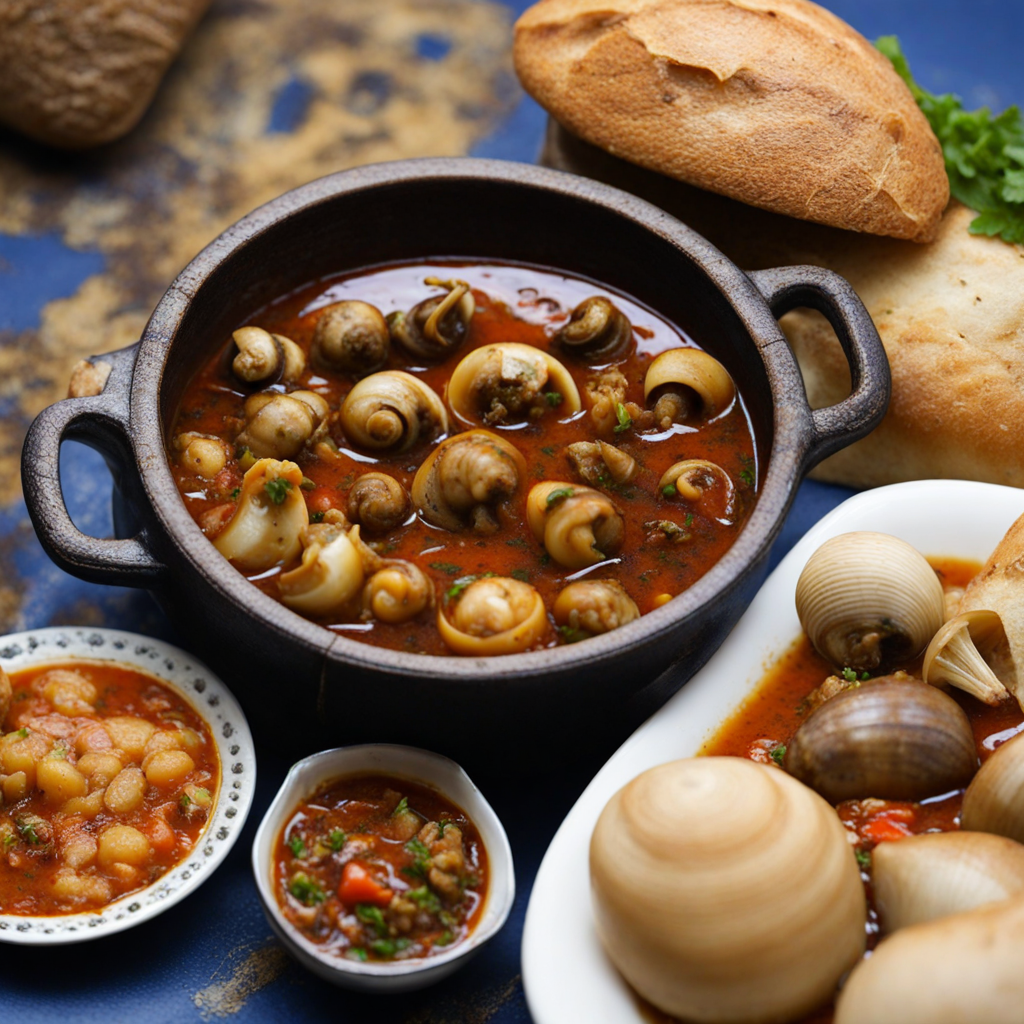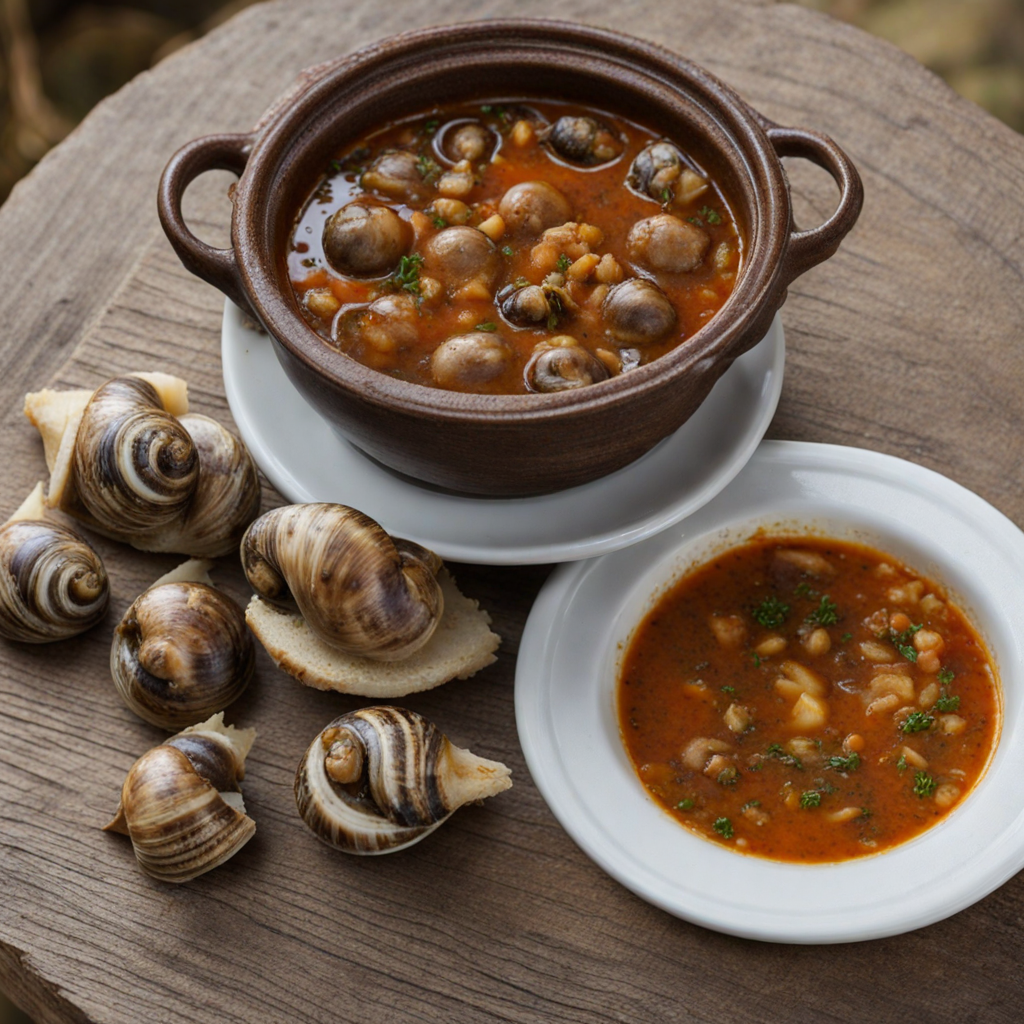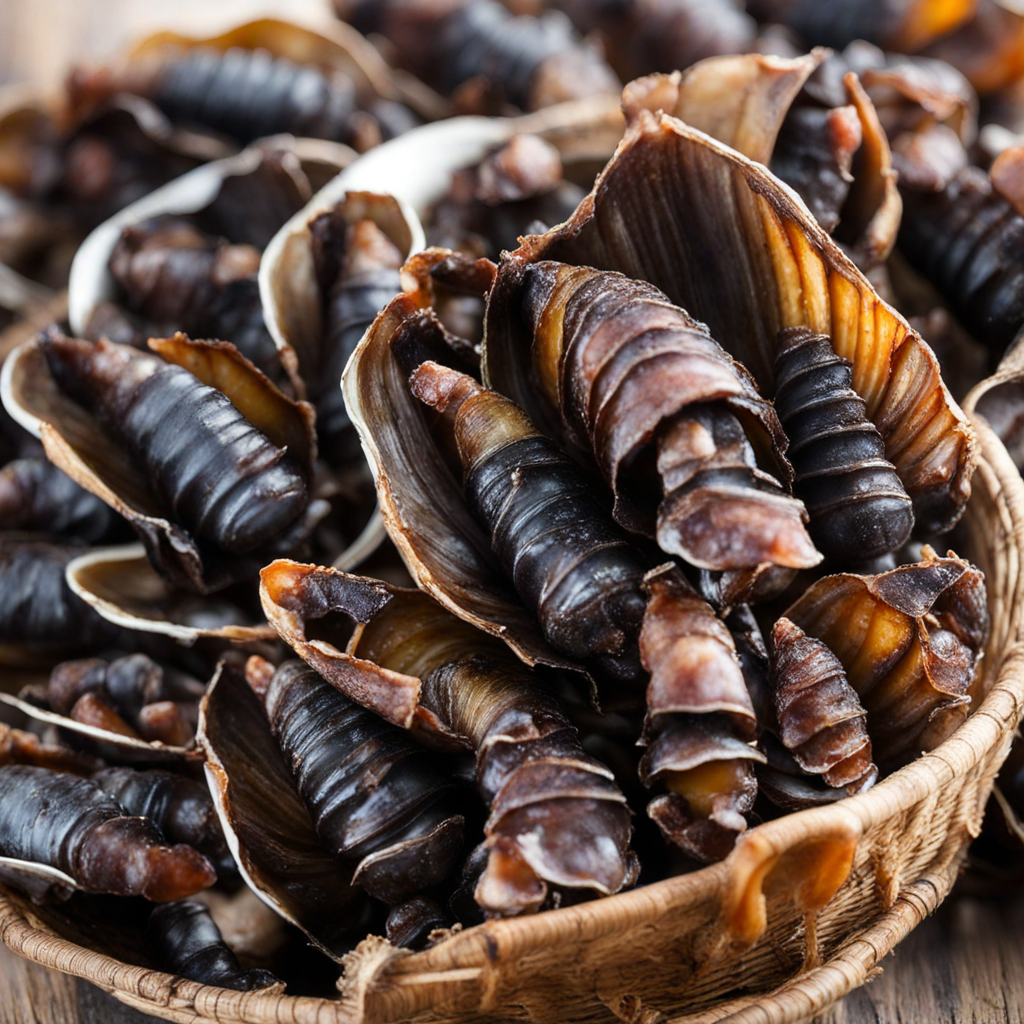Buzio
Buzio is a traditional dish from Cape Verde that showcases the rich flavors of the islands. This culinary delight features the meat of the conch shell, often prepared in a savory stew with a mix of aromatic spices and fresh ingredients. The conch, known for its tender texture and briny essence, is typically simmered with vegetables such as tomatoes, onions, and peppers, creating a vibrant medley that is both hearty and satisfying. The use of local spices, including garlic and bay leaves, enhances the dish, giving it a warm, inviting aroma that fills the air. The preparation of Buzio often involves slow cooking, which allows the flavors to meld beautifully. Many recipes also incorporate coconut milk, lending a creamy richness that complements the natural sweetness of the conch. This dish is usually served with rice or a side of traditional cornmeal, providing a perfect balance to the bold flavors of the stew. Enjoying Buzio is not just about the taste; it's an experience that transports you to the sun-soaked shores of Cape Verde with each bite. In addition to its delightful taste, Buzio reflects the culinary heritage of Cape Verde, where seafood plays a central role in local diets. Each family may have its own variation of the dish, often passed down through generations, making it a unique representation of Cape Verdean culture. For those looking to explore new flavors, Buzio offers a delicious opportunity to savor the essence of the islands, with its combination of oceanic freshness and rustic charm that leaves a lasting impression.
How It Became This Dish
Búzio: A Culinary Treasure of Cape Verde Nestled in the heart of the Atlantic Ocean, Cape Verde is an archipelago consisting of ten distinct islands, each brimming with its unique culture and culinary traditions. Among the many dishes that define Cape Verdean cuisine, "búzio" stands out as both a beloved food and a symbol of the islands' rich heritage. Búzio—a type of edible sea snail—embodies the confluence of natural bounty and cultural significance, making it a fascinating subject for exploration. Origins of Búzio The term "búzio" refers to the shellfish known as "whelk" or "conch," prevalent in the coastal waters surrounding Cape Verde. The islands were discovered in the 15th century by Portuguese explorers, but the culinary practices related to búzio likely predate this European arrival. Indigenous fishing communities had long relied on the ocean's bounty for sustenance. The abundance of marine life, including búzio, provided vital nutrition and played a central role in the daily lives of these early inhabitants. Historically, the ocean has served as both a source of food and a crucial element of Cape Verdean identity. The islands’ unique geographical location made them a crossroads for trade and cultural exchange. As Portuguese colonizers established settlements, they brought with them various European culinary influences, which blended seamlessly with the indigenous practices. This melding of cultures laid the groundwork for the diverse cuisine that Cape Verde is known for today. Cultural Significance of Búzio Búzio holds a place of cultural significance in Cape Verdean society. Beyond its nutritional value, it is often associated with traditional gatherings and celebrations. The preparation and consumption of búzio are typically communal activities, bringing families and friends together. Whether served at a festive occasion, a family dinner, or a beachside gathering, búzio fosters a sense of community and belonging. In Cape Verde, where many communities are closely tied to the sea, búzio also symbolizes the connection between the people and their environment. Fishing has historically been a cornerstone of the economy and a way of life for many residents. The reliance on marine resources reflects a deep respect for the ocean, which has provided sustenance for generations. As such, dishes featuring búzio are often accompanied by stories of the sea, further enriching the cultural narrative surrounding this delicacy. Preparation and Culinary Techniques The preparation of búzio is a culinary art passed down through generations. Typically, the snails are harvested from rocky coastal areas, where they cling to the rocks. After being collected, they are cleaned and cooked, often boiled or grilled, to enhance their natural flavors. One popular way to serve búzio is in a spicy sauce, made with local ingredients such as garlic, onions, tomatoes, and chili peppers. This dish, known as "búzio à la moçambicana," reflects the influence of Mozambique, a former Portuguese colony, showcasing how culinary traditions can transcend geographical boundaries. The result is a dish that is both flavorful and aromatic, highlighting the freshness of the sea snails. In addition to being served in sauce, búzio can also be incorporated into salads, stews, and pasta dishes, demonstrating the versatility of this ingredient. The use of búzio can vary from one island to another, with each community adding its own twist and flavor profile, further enhancing the dish's regional significance. Evolution Over Time As Cape Verdean society has evolved, so too has the role of búzio in its culinary landscape. The 20th century brought significant changes to the islands, including urbanization and migration. Many Cape Verdeans moved to mainland Portugal or other countries, taking their culinary traditions with them. This diaspora has led to the introduction of Cape Verdean cuisine, including búzio, to new audiences, resulting in a fusion of flavors and techniques. In recent years, the global interest in sustainable seafood has brought renewed attention to traditional dishes like búzio. Chefs and food enthusiasts are increasingly drawn to the idea of using local, seasonal ingredients, and búzio fits this bill perfectly. As a result, it has found its way onto menus in upscale restaurants, where chefs showcase it with modern techniques while still honoring traditional methods of preparation. The rise of food tourism in Cape Verde has also played a role in elevating the profile of búzio. Tourists seeking authentic experiences are often eager to explore local flavors, and dishes featuring búzio are among the most sought after. This has encouraged local chefs to innovate while maintaining their culinary roots, creating a dynamic food scene that celebrates traditional ingredients. Challenges and Sustainability Despite its popularity, the future of búzio is not without challenges. Overfishing and environmental changes threaten marine ecosystems worldwide, and Cape Verde is no exception. The growing demand for seafood puts pressure on local populations of búzio, prompting concerns about sustainability. To combat these issues, there is a growing movement within Cape Verde to promote responsible fishing practices and raise awareness about the importance of marine conservation. Sustainable seafood initiatives aim to ensure that future generations can continue to enjoy the flavors and cultural significance of dishes like búzio. Conclusion Búzio is more than just a delicious dish; it is a testament to the rich cultural tapestry of Cape Verde. Its journey from the ocean to the plate encapsulates the history, community, and resilience of the Cape Verdean people. As culinary traditions continue to evolve and adapt, búzio remains a cherished symbol of connection to the sea and the shared heritage of the islands. In celebrating this exquisite shellfish, we not only honor the past but also pave the way for a sustainable future, ensuring that the flavors of Cape Verde endure for generations to come.
You may like
Discover local flavors from Cape Verde







